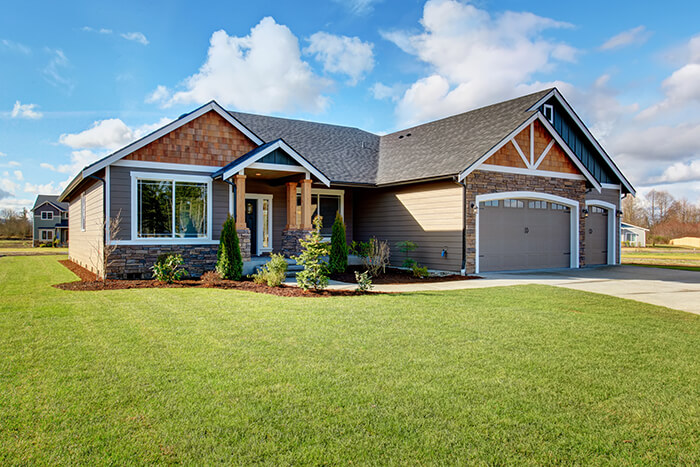Best and Worst Cities to Buy a Home in 2021 in the U.S.

LOS ANGELES, CA – Last year 5.34 million existing homes were sold according to data from the National Association of REALTORS®. 682,000 newly constructed homes were sold in 2019, according to the U.S. Census Bureau. The typical home purchased was 1,850 square feet in size, was built in 1990, and had three bedrooms and two bathrooms.
Despite COVID-19, the median national home listing price grew by 5.1 percent year-over-year, to a new high of $342,000 in June, according to Realtor.com. Of the largest 50 metros, 46 saw year-over-year gains in median listing prices in June, up from 35 last month.
With mortgage interest rates hitting record lows but many Americans struggling financially due to the COVID-19 pandemic.
To determine the most favorable housing markets for first-time buyers, they took the pulse of real estate in 300 cities of varying sizes using 26 key metrics. The data set ranges from housing affordability to real-estate tax rate to property-crime rate.
Akron, Ohio, has the most affordable housing (median house price divided by median annual household income), with a ratio of 1.90, which is 7.8 times cheaper than in Berkeley, California, the city with the least affordable housing, with a ratio of 14.82.
Honolulu has the lowest real-estate tax rate, 0.29 percent, which is 13.1 times lower than in Waterbury, Connecticut, the city with the highest at 3.79 percent.
Rochester, New York, has the highest rent-to-price ratio, 15.88 percent, which is 4.7 times higher than in Sunnyvale, California, the city with the lowest at 3.38 percent.
Westminster, Colorado, has the lowest total home-energy cost per month, $99.29, which is 3.9 times lower than in Honolulu, the city with the highest at $388.18.
What should first-time home buyers consider when choosing a neighborhood?
“One that they would be comfortable living in for 5-7 years as transaction costs of moving are high for real estate,” said Mark Epple, Ph.D., University of Wisconsin – Madison. “For the location, Walkscore is a nice starting point to assess the amenities near a potential home purchase. The purchase of a home is also the purchase of a set of neighborhood amenities such as proximity to a grocery store, drug store, walking path, schools, a coffee house, etc. While the site and building-specific attributes are often listed by realtors, the neighborhood amenities are often less clear. Finally, walk/drive/bike the neighborhood at several different times of the day – get a feel for the neighborhood.”
“Choosing a neighborhood is almost as important as choosing your new home,” said Jen Cookke, Massachusetts Institute of Technology. “Consider finding your “perfect home” but it turns out the neighborhood is less than ideal. Take the time to do your research. Some ideas: Check with local law enforcement. Drive around the neighborhood. Do this at different times of the day to make sure you get a sense of what goes on, ask friends, and or the real estate professionals what the feel of the neighborhood is – are there lots of kids? Are most of the homes owner-occupied? Also, check to see if the neighborhood provides the services and commuting opportunities that you value.”
“First time home buyers should consider whether they want to live in a racially diverse neighborhood or to contribute to segregated housing patterns established in part through explicitly racist government policy and industry practices in the last century,” said Caslus Pealer, J. D., Tulane University. “Especially when buying in an older suburb, check to see if there is a racial covenant on the land that originally prohibited the sale of your new home to non-white families. Also, look to see whether the neighborhood has a mix of uses and building types including multifamily buildings or townhomes, and access to public transit (bus or rail) if this resource is available in your community.”
“Consider the environmental conditions: What are the other houses like? Are there obnoxious noises or smells? What is the crime rate? Always, always, talk to potential neighbors,” said Peter F. Colwell, Ph.D., University of Illinois.
What do you recommend as the minimum down payment for a first-time homebuyer?
“While many lenders may allow a buyer to put down only 3-5%, I’m a big believer in having “skin in the game”, said David M Harrison, Ph.D., University of Central Florida. “As such, I take a much more conservative approach and suggest at least 10% down. If the buyer cannot assemble a 10% down payment, they may need to ask themselves if they truly have sufficient disposable income to afford the on-going costs of homeownership.”
“Homebuyers have several options today that may reduce the amount of money they are required to put down, including FHA and VA loans,” said Kimberly Lichtenberg, Ph.D., American University. “Depending on individual circumstances, a lower down payment option may warrant consideration. However, having a low-equity position in what for most people is their single largest asset can be precarious if economic and market conditions change, as we saw during the global financial crisis.”
